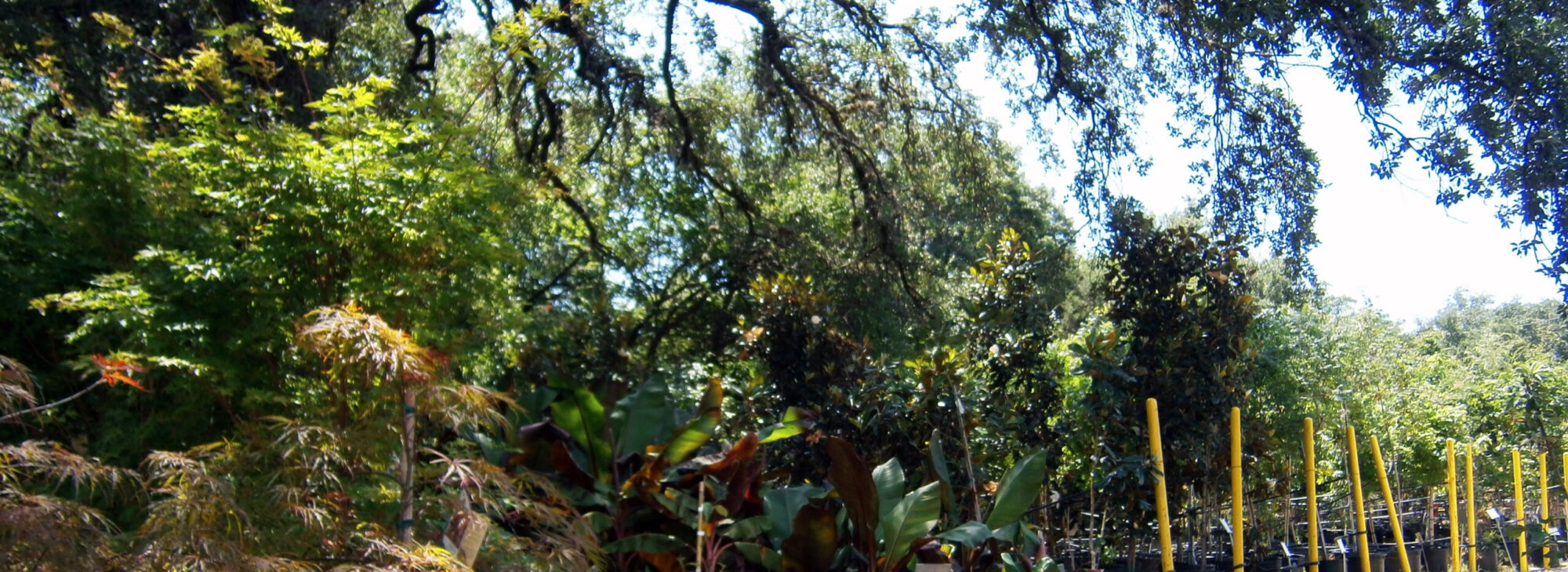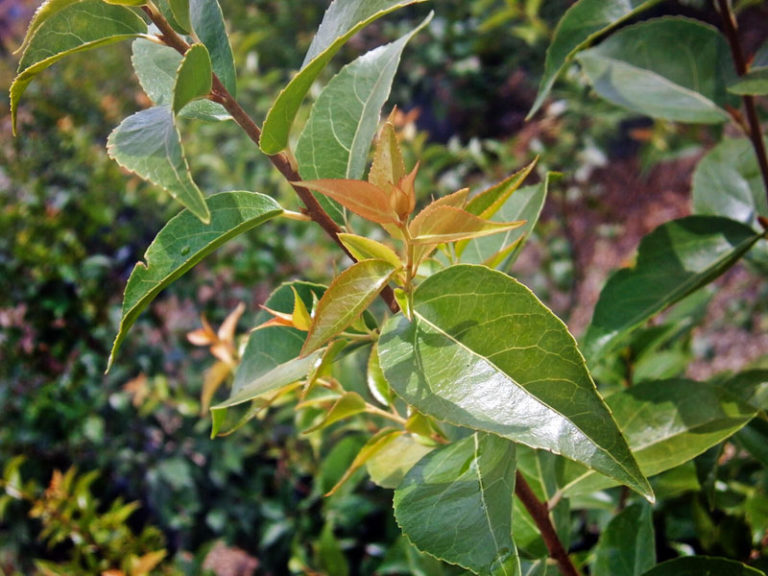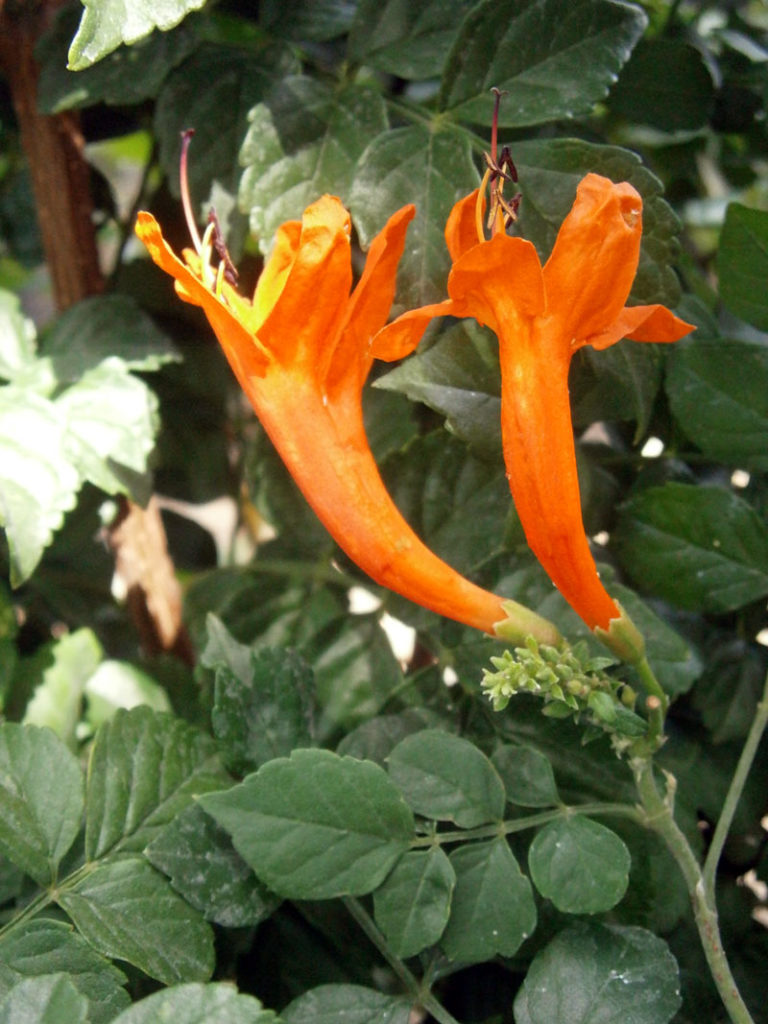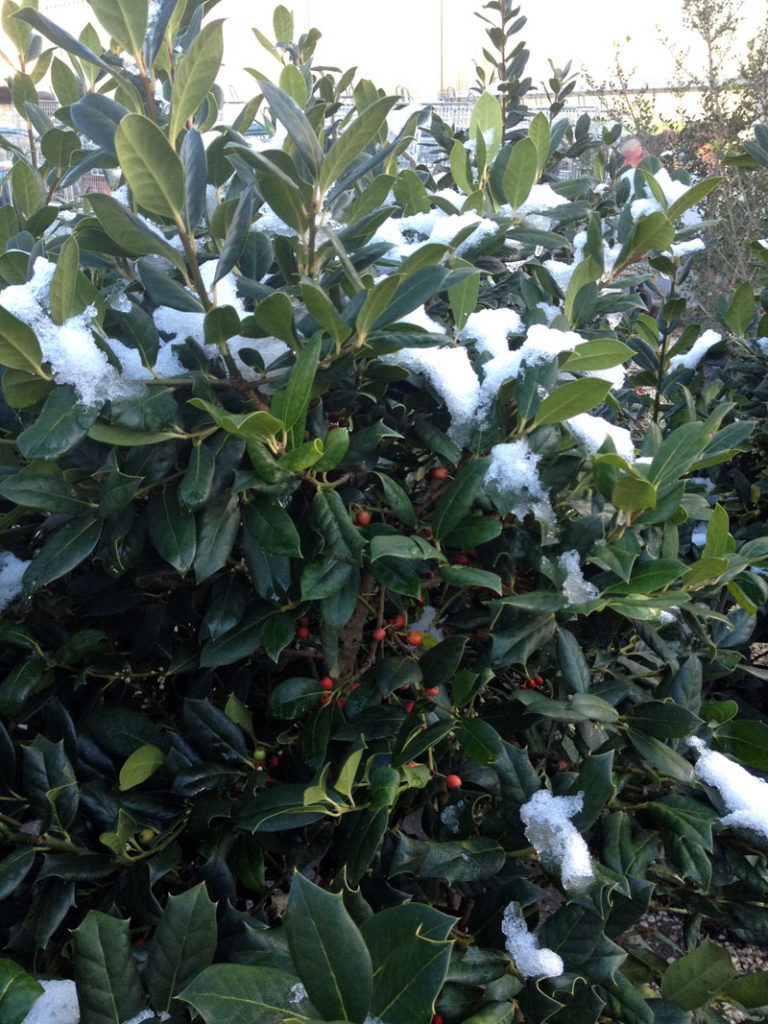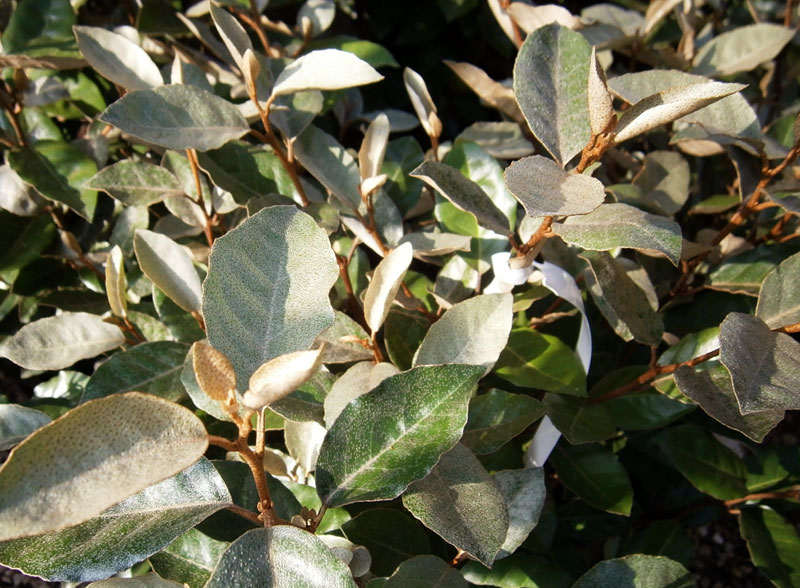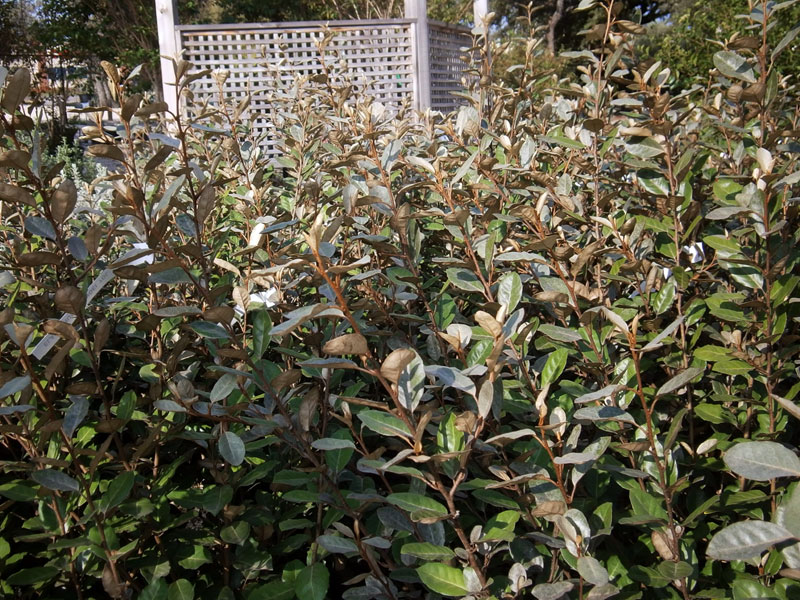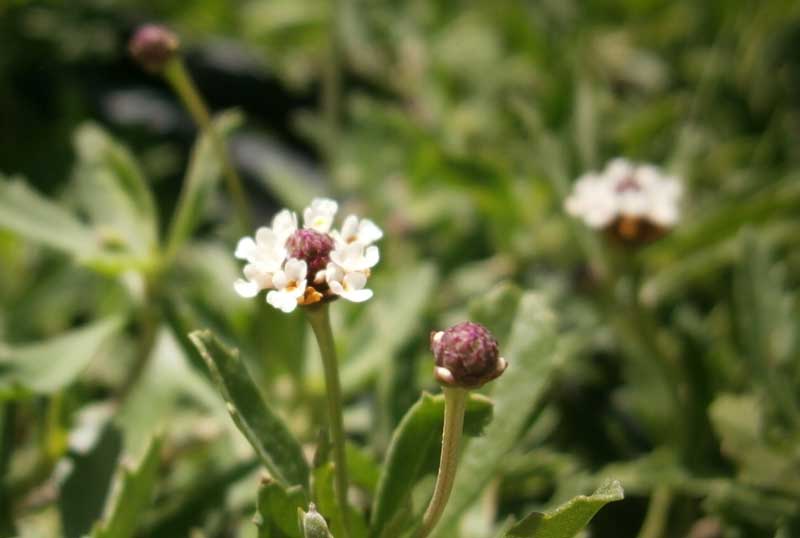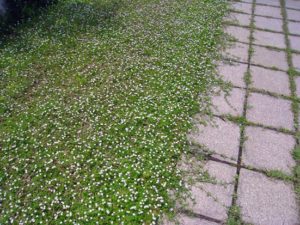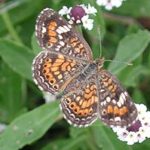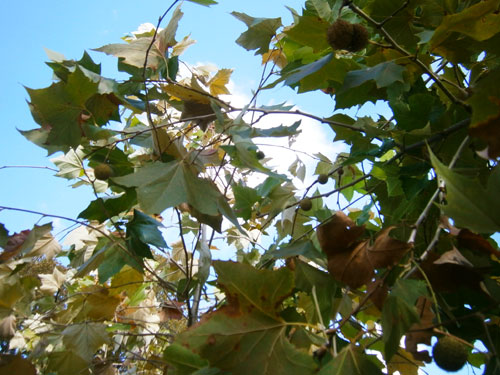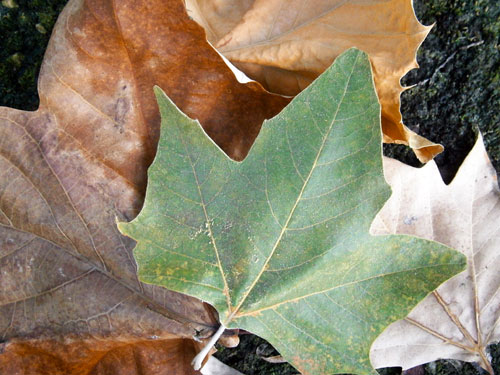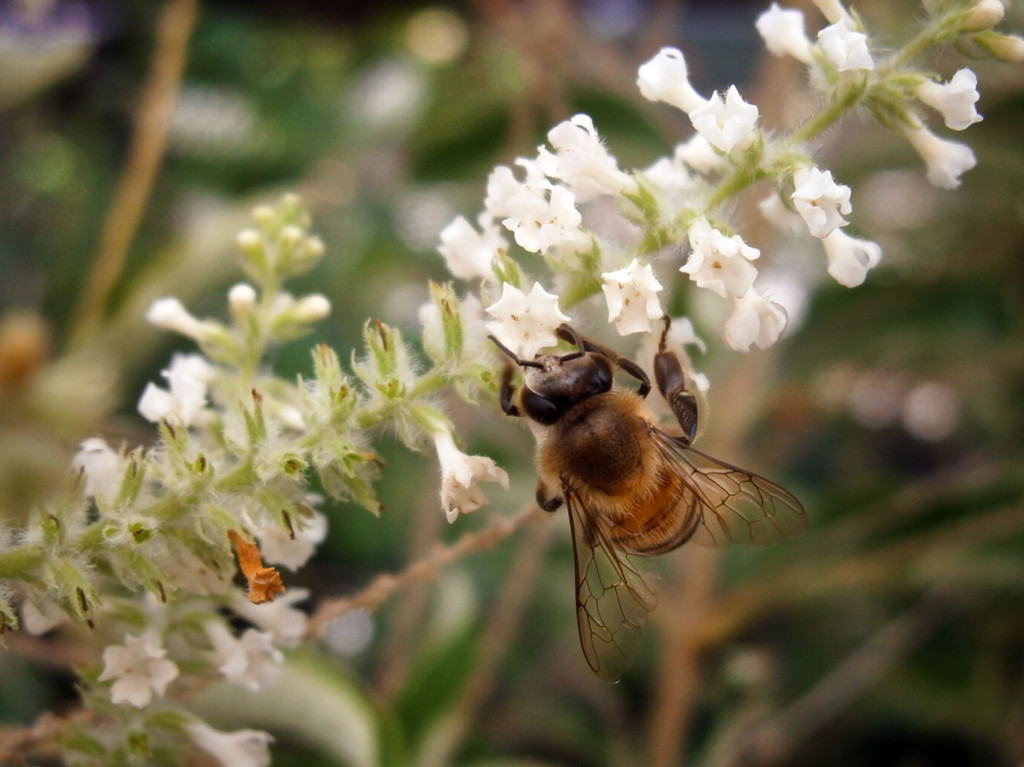September 2019
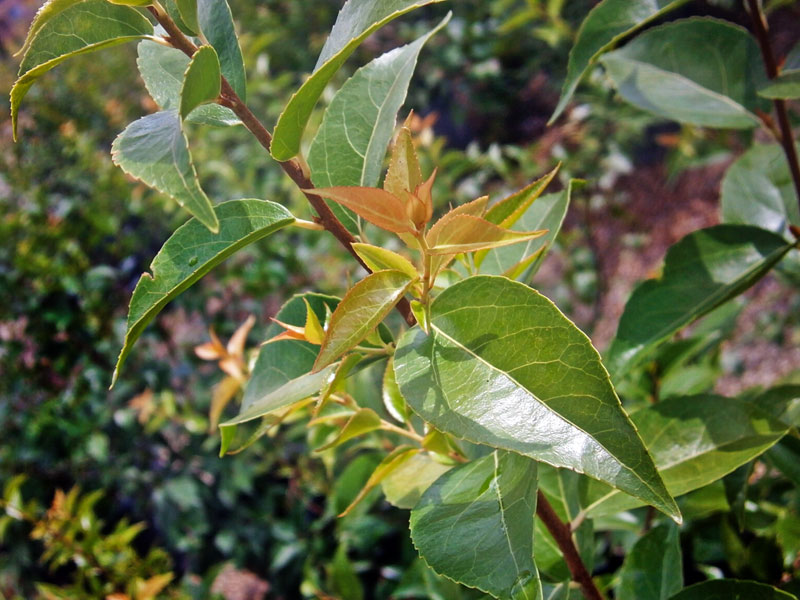
What's the name of that plant? It's green...and has a weird name...Xylophone? No. Xylograph? Nah. Xena Warrior Princess? Nope. You're thinking of Xylosma!
Shape, Size and Color
Xylosma (pronounced z-eye-las-mah or z-eye-lohs-mah) may have a funny name, but has lots of value in the landscape. This evergreen shrub features beautiful reddish bronze new growth that matures to a shiny, bright green. The tear drop shaped leaves grow on long arching branches giving it a shrubby form.
It will grow to about 10 or 12 feet tall and wide, making it an excellent choice for privacy hedges, foundation plantings, windbreaks and backgrounds. Left to its own devices, Xylosma has a loose, open growth habit, but can also be easily sheared back into neat, tidy hedges. With some training, it can even be shaped into a small tree.
But, Not Just Green
While this shrub does make a flower, you might not notice much. The honey bees will, however! The flower is small and yellowish-green and is then followed by small, black ornamental fruit which attracts birds.
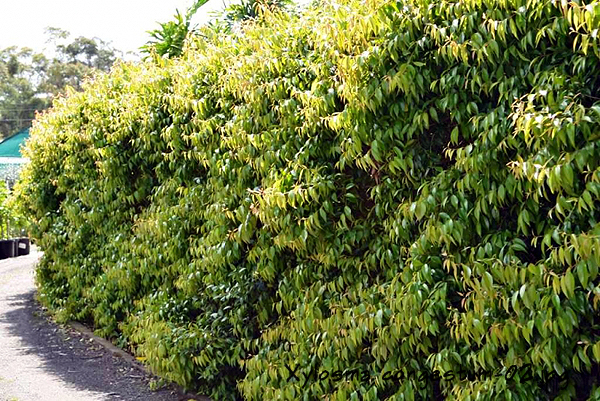
Now, where to put it?
Plant this beauty in full or partial sun. Though it prefers regular watering, it doesn't mind summer sun or heat once it gets established. It is cold hardy to 10º, rarely has pest or disease problems and is deer resistant. Xylosma is also a fast grower!
This plant looks fantastic alongside crape myrtles, lantana or shrub roses. But truly, it looks great with just about anything! Xylosma is available at The Garden Center regularly throughout the year. Right now, we have plenty of them in 5 or 7 gallon containers. Come by and see us!

